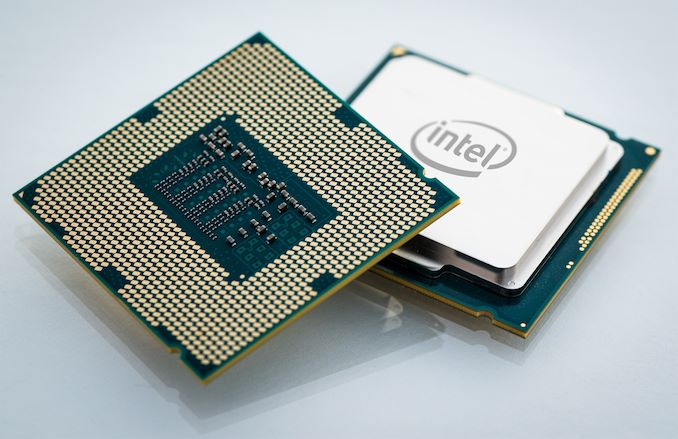Intel Un-Discontinues Pentium G3420 ‘Haswell’ CPU
by Anton Shilov on December 9, 2019 4:00 PM EST
As spotted by ComputerBase.de, in a rare event, Intel has canceled its plan to EOL one of its low-end Haswell-generation processors, resuming processor shipments for the foreseeable future. Curiously, the change in plans comes less than two weeks after Intel first began the process of discontinuing the processor. And while Intel does not publish their the detailed rationale behind their decisions in their product change notifications, given the company's ongoing low-end CPU shortage, it's fair to say that Intel needs all of the low-end CPUs it can get at the moment.
The processor in question is Intel’s Pentium G3420, which offers two Haswell architecture CPU cores (no HyperThreading) running at 3.20 GHz, as well as the company’s HD integrated graphics. The 22nm chip is compatible with the widely available LGA1151 infrastructure that supports 53 W CPUs. As a part of Intel’s Haswell family, the chip was originally meant to be used inside low-end desktops, and it has also found its way into devices such as NAS boxes.
Keeping in mind that most embedded versions of Haswell CPUs have been EOLed, this one could be an answer to demand from that market. Alternatively, ComputerBase believes that the change in plans is a stop-gap for Intel, so that they have some kind of low-end Core-based Pentium processor to offer OEMs who are currently being starved of suitable Skylake chips.
The statement from Intel reads as follows:
This revision supersedes the prior EOL notice and is intended to inform customers that they do not need to do anything more on their end for last orders and should plan on this product being available as usual. Please disregard the notice of the product End of Life as shared in prior communications and note that this product will continue to be available for orders as usual. Intel is not pursuing EOL of this product at this time.
Related Reading:
- Thecus Announces Two New Rackmount NAS Servers
- Devil’s Canyon Review: Intel Core i7-4790K and i5-4690K
Sources: Intel, ComputerBase













49 Comments
View All Comments
milkywayer - Wednesday, December 11, 2019 - link
Yup. Intel has been pretty innovative when it comes to intentionally stagnating the global computer market at a soft-fixed 4-core CPU mark for a good 5-7 years. Then AMD comes out with Zen/2 and all of a sudden, Intel out of the goodness of it heart breaks the curse and start releasing 6 and 8 core mainstream CPUs and start selling $2000 CPUs of yesteryear rebranded a bit for $1000.MrSpadge - Monday, December 9, 2019 - link
I always wondered why they didn't use more 22 nm chips when the 14 nm shortage became apparent. At 53 W this thing could easily run at 4.0 GHz and with HT active it could certainly rival the low end Skylake performance.mode_13h - Monday, December 9, 2019 - link
How do you know how many 22 nm chips they *did* sell?The i3-4370 is the fastest Haswell-R dual-core. Its TDP is 54 W and it runs at 3.8 GHz. Maybe, if they enabled turbo, you'd hit 4.0 GHz.
drexnx - Monday, December 9, 2019 - link
I agree with wondering why they hadn't done anything like this up until now. Given the amount of plus plus plussing that they've done on 14nm, don't you think they could have done the same with 22? I know 22 wasn't as good a clocker as 32nm was, but devil's canyon had decent clocks (4.0/4.4), better than skylake (4.0/4.2) in fact!also the equipment is all fully depreciated at this point and yields should be near 100%
drexnx - Monday, December 9, 2019 - link
I also do think there was some hubris of "well 10nm will be totally fixed in 6-9 months, why waste time respinning a 22nm design?" and then recycling this flawed logic for 2+ yearsMrSpadge - Tuesday, December 10, 2019 - link
> How do you know how many 22 nm chips they *did* sell?I don't. But I know they did nothing to help the 14 nm shortage by making the most out of the existing 22 nm chips. Instead they introduced 14 nm quad cores without HT in lower price brackets, i.e. bigger dies than dual core with HT and on the capacity-constrained node.
BTW: I'm pretty sure that Haswell does not need those 54 W at 3.8 GHz dual core. It's just in this TDP class because it needs more than 35 W.
Spunjji - Wednesday, December 11, 2019 - link
Guaranteed it doesn't need that. With all of the core and process revisions Haswell and 22nm have been through, it's probably closer to the 35W end of that band than 53W.wow&wow - Monday, December 9, 2019 - link
One more Guinness World Records for Intel!Already has one for "Volume Down but Revenue Up", the only company in the world can do that, amazing!
khanikun - Tuesday, December 10, 2019 - link
Actually Apple already did that with their iPhone X.uefi - Monday, December 9, 2019 - link
Long live Windows 7!